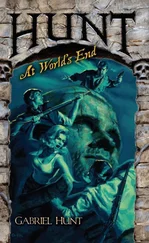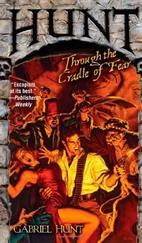‘When will the war finally be over?’ she murmured.
But that particular fear was only a small part of the wave of terror that submerged her. Suddenly she took Margont in her arms and held him as tight as she could. And just as suddenly she kissed him, more and more, unable to stop, fearing that when she released his mouth, he would immediately tell her that he was obliged to go. Her mother knocked at the door. Margont pulled away. Luise whispered in his ear, so softly that he almost did not hear her: ‘Desert...’
He freed himself from her embrace, pretending that he had not heard her.
‘I have to rejoin my regiment. As soon as we can, Lukas and I will come and see you and we will look together at what you have gathered about Teyhern. When the investigation and the war are over we will all be free. Then you and I will be able to—’
‘No promises!’ she interrupted. ‘Come back safe and well, the two of you, that’s all I desire at the moment. Lukas dragged you into this affair and you swore to me that you would watch over him. If one of you two dies, I will never forgive the other. So concentrate on staying alive.’
CHAPTER 30
BY 3 July, the divisions were finally deployed in the correct places. On 4 July, the army corps received precise orders about the manoeuvres they were to execute. At the same time Archduke Charles ordered his brother Archduke John to abandon his position near Pressburg in the south, because it was becoming clear that the French would not attack down there. The thirteen thousand men available to John were to join up with the left flank of the main body of the army as quickly as possible. However, torrential rain held up the transmission of the message and John’s forces did not begin to move until the following morning.
Towards nine o’clock Napoleon decided to make use of the poor visibility caused by the rain. He began to send his troops across the Danube with the help of gunners, boats and barges. The French easily repulsed the little Austrian units guarding the bank. Innumerable batteries from Lobau opened fire on the villages of Aspern and Essling, immobilising the most advanced Austrian
troops and creating a diversion. Napoleon sent the Legrand Division to take up position on the east bank, but at the level of the old bridgehead, to make the Austrians believe that he was going to occupy the same battlefield as in May. The Archduke fell into the trap and ordered the forces of Aspern and Essling to bombard the northern part of Lobau. He thought his round shot was causing havoc to the French and their allies, when actually they were assembling in the east of the island. Charles also released into the Danube burning boats that did not succeed this time in damaging the reinforced, protected bridges.
Towards one thirty in the morning, the French assembled the pieces of the first preconstructed bridge in order to link the east side of Lobau to the east bank. They managed it in five minutes. Two others followed. The regiments immediately began to cross en masse, drenched by the rain and deafened by the thunder and the bombardments.
The men advanced in serried ranks but broke rank the moment they set foot on the bridges. The officers reorganised the soldiers once they were safely on the other bank. In the predawn gloom, torches provided the only light. As the hours passed, the Grande Armée formed an extremely dense unit: the army corps of Masse-na, Oudinot and Davout marched at the front, supported by Mont-brun’s light cavalry and Grouchy’s dragoons. The French were able to position themselves rapidly without losing their cohesion. When Archduke Charles finally understood what Napoleon was doing he hastily sent troops to prevent the French from advancing as they pleased. But those troops were insufficient to interrupt the march of Oudinot’s and Davout’s sixty thousand men. Meanwhile Massena’s IV Corps was taking the villages of Essling and Aspern from the rear.
By six o’clock that evening, Napoleon’s operation had been successfully completed. His army had crossed the Danube unimpeded, manoeuvring itself with spectacular speed. The Austrians, taken unawares, had not been able to hinder their deployment. The Grande Armée occupied the immense plain of Marchfeld, the terrain earmarked by the Emperor. It formed a convex arc backing onto the river. The centre was about six miles north-east of the bridges. The majority of the troops, the corps of Bernadotte, Macdonald, Grenier, Marmont and Oudinot, were positioned on the front line. The Imperial Guard was placed behind, with Bessiere’s heavy cavalry, that is to say, eight thousand cuirassiers and carabineers. The left flank, spread over six miles, was relatively weak. It consisted only of part of Bernadotte’s Saxons and Massena’s IV Corps. Behind this last lay the villages of Aspern and Essling. The right wing was made up of Davout’s III Corps, Montbrun’s light cavalry and the dragoons of Pully and Grouchy. Napoleon had therefore constructed a strong right flank, very mobile thanks to the high preponderance of cavalry, and a powerful centre that he intended to use in a phenomenal hammer blow to smash the Austrian centre. These concentrations of soldiers had been put together to the detriment of the left flank.
The Austrians mirrored the French line, presenting a concave front stretching over twelve miles. Klenau’s VI Corps and Kolowrat’s III Corps assured their right flank. The élite reserve troops of the Prince of Liechtenstein joined the right flank to the extremely impressive centre. It dominated the heights of Wagram, fifty feet high and bordered by the Russbach river whose banks were extremely marshy. In the centre, Bellegarde’s I Corps, Hohen-zollern’s II Corps and the reserve cavalry of Nostitz were stationed. Finally, their left flank was made up of Rosenberg’s IV Corps and Nordmann’s vanguard.
On the evening of 5 July Archduke Charles anxiously awaited the arrival of Archduke John, whose men were supposed to fall upon the French right, placing Napoleon in a very difficult situation. He did not know that his brother was still a long way off and was having no success in hurrying his troops along.
Napoleon knew that time was not on his side: he would have to act quickly in order to ensure that Charles did not receive John’s reinforcements. He had no idea what Charles was planning. The Austrians had not really tried to confront him. Did Archduke Charles plan to withdraw and attack elsewhere? Until now, everything had turned out perfectly for the French. Napoleon decided to exploit the gains made during the day, contrary to his initial plan, which had not envisaged launching the principal battle until the next day. The Emperor ordered Bernadotte’s Saxons to take the village of Deutsch-Wagram, to the right of the Austrian centre. Oudinot, Prince Eugene - whose army included the corps of Macdonald and Grenier - and Davout were charged with attacking the Austrian centre.
Napoleon told an aide-de-camp, ‘Go and tell Oudinot that I can hear nothing at the moment, that he must march a little further and give us a little music before nightfall.’
The battle began at seven thirty. Oudinot failed in the face of the Austrians’ tenacity. Prince Eugene almost broke through but Archduke Charles came in person to galvanise his men, and there also the French had to withdraw. The French Seras Division, seeing the French beat a retreat pursued by soldiers in white coats, opened fire on these last. In fact they were Saxons attached to Dupas’s division, who had been caught in the crossfire and were fleeing. These men jostled into the Lamarque, Seras and Durutte
Divisions, also retreating in disarray. It took a long while for these troops to regroup. Only Davout succeeded in advancing, but as his division was isolated, he too had to retreat to his starting position.
Читать дальше











